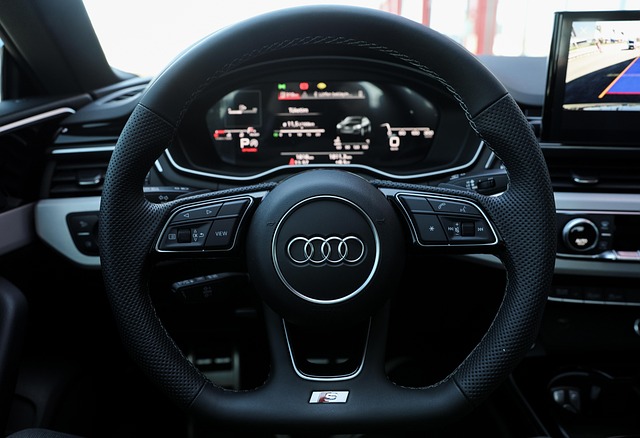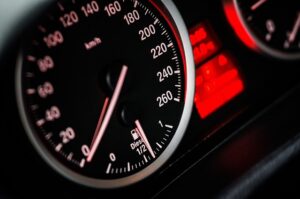Register Car California: Step-by-Step Guide to DMV Vin Verification
Looking to register your car in California? This comprehensive guide walks you through every step, from understanding key requirements to obtaining your license plate. Discover the importance of a DMV…….

Looking to register your car in California? This comprehensive guide walks you through every step, from understanding key requirements to obtaining your license plate. Discover the importance of a DMV VIN verification process, gather necessary documents, and complete the registration application effortlessly. By following these straightforward instructions, you’ll have your vehicle registered in no time, ensuring compliance with California’s regulations.
- Understand California Car Registration Requirements
- Gather Necessary Documents for DMV Visit
- Perform VIN Verification: Steps and Importance
- Complete Application Process at the DMV
- Obtain License Plate and Register Your Vehicle
Understand California Car Registration Requirements

Before registering your car in California, it’s crucial to understand the state’s specific requirements. The California Department of Motor Vehicles (DMV) mandates that all vehicles operating within the state be properly registered and inspected to ensure roadworthiness and safety. One key step is the DMV vin verification process, which involves checking the vehicle identification number (VIN) to establish its authenticity and history. This process helps prevent stolen vehicles from being registered and ensures compliance with emission standards.
Additionally, California requires up-to-date vehicle inspection certificates to confirm that your car meets safety and emissions regulations. For a more convenient approach, many individuals opt for mobile vin verification or mobile vin inspection services, allowing them to complete these necessary steps without visiting a DMV office. These services, provided by trusted mobile vin verifiers, streamline the registration process, making it accessible and efficient for California residents.
Gather Necessary Documents for DMV Visit

Before visiting the DMV, make sure to gather all the necessary documents for a smooth registration process. One crucial step is to obtain a Vehicle Identification Number (VIN) verification from a trusted source, which can be done through a mobile vin inspection or online services. This verification ensures that your vehicle’s details match the records and aids in faster processing.
Having your VIN inspected beforehand saves time and effort during your DMV visit. It involves providing proof of ownership, such as a title or registration certificate, along with the accurate VIN from your vehicle. This information is essential for the dmv vin verification process, which cross-references the data to ensure all details are in order before finalizing the registration.
Perform VIN Verification: Steps and Importance

Before you can register your car in California, it’s crucial to perform a VIN (Vehicle Identification Number) verification through the DMV. This essential step involves cross-referencing your vehicle’s unique VIN with the manufacturer’s records to ensure its authenticity and history. You can complete this process using a mobile vin verifier or by scheduling a vin inspection at a designated DMV location.
To initiate the verification, obtain your car’s VIN from the vehicle identification plate or the owner’s manual. Then, access the DMV’s online system or download a compatible app for the DMV vin verification. Fill in the required details, including the VIN and your personal information. The system will then conduct a comprehensive check, retrieving data on the vehicle’s history, previous owners, and any reported incidents or recalls. This step is vital to ensure that you’re registering a safe and legal vehicle.
Complete Application Process at the DMV

To complete the car registration process in California, you’ll need to follow a straightforward application procedure at the Department of Motor Vehicles (DMV). The first step involves gathering essential documents and ensuring your vehicle is eligible for registration. This includes presenting proof of ownership, typically through a certificate of sale or a title document, along with valid identification such as a driver’s license. Additionally, you’ll need to undergo a vin inspection to verify the vehicle identification number (VIN) data, which is crucial for accurate record-keeping.
Once your documents are in order, head to your nearest DMV office. There, a representative will guide you through the application form, which requires detailed information about your car, including its make, model, year, and color. They’ll also conduct a mobile vin inspection to cross-reference the provided VIN with their records, ensuring there are no discrepancies. This step is vital for maintaining California’s robust vehicle registration system and preventing fraud.
Obtain License Plate and Register Your Vehicle

After completing your vehicle’s purchase, it’s time to obtain a license plate and register your new car in California. The first step is to schedule a DMV (Department of Motor Vehicles) visit or use their online services for a DMV VIN verification. This process involves confirming your vehicle’s unique identifier, known as the Vehicle Identification Number (VIN), which can be done quickly through a vin inspection.
During your visit, you’ll need to bring essential documents like proof of purchase, ownership transfer documents, and identification. You can also opt for a mobile vin verification service that allows you to complete the VIN check from the comfort of your home or on-the-go. Once your vehicle passes the inspection, you’ll be issued a registration certificate and license plates, officially registering your car in California.
Registering a car in California involves understanding state requirements, gathering essential documents, performing a DMV (Department of Motor Vehicles) VIN (Vehicle Identification Number) verification, completing an application, and obtaining license plates. By diligently navigating these steps, you’ll ensure your vehicle is legally registered, enhancing your driving experience within the Golden State’s vibrant automotive landscape. Remember to always check the latest DMV guidelines for any updates or changes in the registration process.







